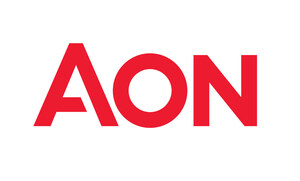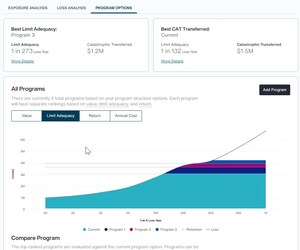LINCOLNSHIRE, Ill., April 20, 2015 /PRNewswire/ -- U.S. pharmacy cost increases for active employees and pre- and post-65 retirees are expected to drift into the low double-digits by 2016, according to an analysis by Aon Hewitt, the global talent, retirement and health solutions business of Aon plc (NYSE: AON). Pharmacy cost increases before plan design changes are projected to be 9.5 percent in 2015 and will continue to rise to 10 percent in 2016. Aon Hewitt predicts a similar rate of increase in 2017, with pharmacy costs rising by 10.5 percent.
"Medical cost increases over the past few years have offset some of the higher pharmacy costs in the short-term, but for 2015 and 2016, there will be more pressure than relief on pharmacy cost," said Tim Nimmer, global chief actuary for Aon Health. "This is primarily due to high price inflation for brand and specialty drugs, a slowdown in blockbuster drugs losing patent protection, generic dispensing rates leveling off, and the robust pipeline of specialty drugs including the new Hepatitis C treatments. If left unmanaged, these issues could have a significant impact in pushing these increases even higher."
Medical Costs to Offset Impact of Higher Pharmacy Cost
According to Aon Hewitt's analysis low medical costs are expected to mitigate some of the higher pharmacy costs. Medical cost increases for active and pre-65 retirees before employee cost sharing are projected to be 4.5 percent in 2015 and 5.0 percent in 2016. This brings the combined projected medical and pharmacy cost trend for active and pre-65 employees to 5.4 percent in 2015 and 5.9 percent in 2016.
"Over the past few years, employers have implemented a number of strategies to lower medical costs, including cost sharing through higher copays or high-deductible plans, implementing high performance networks, promoting consumerism and optimizing vendor partners," added Nimmer. "Reduced consumer spending on discretionary items like health care has also contributed to the lower rate of premium increases we have seen. As the economy continues to improve, we expect to see these rates to steadily climb."
Employer Actions to Mitigate Pharmaceutical Cost Trend
According to Aon Hewitt, there are a number of steps employers can take to implement competitive yet cost-effective pharmacy management programs:
- Adjust pharmacy design components to encourage the use of generic drugs. This includes using coinsurance rather than copays for brand drugs and by introducing mandatory generic and step therapy programs.
- Ensure medical vendors and/or Pharmacy Benefits Managers (PBM) have programs in place to manage costs, such as prior authorization and care management.
- Implement effective compound drug management strategies.
- Know your specialty drug spend and design specialty benefits to ensure that members will receive the right specialty medication through the most appropriate setting and that appropriate measurement criteria are in place to measure the effectiveness of the benefit and better control spend.
- Aon Hewitt estimates about 50 percent of specialty drug costs are paid under the medical benefit. Total therapy cost for a given specialty medication may vary significantly based on site of care. Conducting a site of care analysis may identify opportunities to save cost.
- As alternative therapies enter the market, work closely with PBMs to develop strategies for managing associated costs.
- Pharmacy rebates have increased significantly over the last couple years. Conduct regular rebate reporting and evaluate market competitive pricing to ensure current pricing terms remain competitive.
"The dramatic increase in specialty costs means that implementing strategies to promote generic utilization, 90-day prescriptions and member adherence in non-specialty categories is more important than ever," said John Malley, leader of Aon Hewitt's Innovation Pharmacy Team. "On the specialty side, PBMs have been aggressively negotiating rebate contracts with manufacturers to keep the total cost of these medications in a range employers can reasonably absorb. Employers should continuously monitor their pharmacy pricing, either through discussions with their current PBM or a competitive bid process, to ensure they are receiving the full value of these improved rebate contracts."
About This Analysis
This data is derived from Aon Hewitt's semi-annual Spring Trend report, which is a prospective estimate of future medical trends. Projections are determined by conducting an actuarial analysis of medical trend cost information from a number of internal and external sources, including client experience, government sources, carriers and other credible third-party sources.
Further information
For further information please contact the Aon Hewitt PR team: Maurissa Kanter, 847-442-0952, or Amy Kaleniecki, 847-771-4225.
Follow Aon Hewitt on Twitter: @AonHewitt
For information on Aon plc and to sign up for news: http://aon.mediaroom.com
Logo - http://photos.prnewswire.com/prnh/20100719/AQ37264LOGO
SOURCE Aon plc
Related Links
WANT YOUR COMPANY'S NEWS FEATURED ON PRNEWSWIRE.COM?
Newsrooms &
Influencers
Digital Media
Outlets
Journalists
Opted In






Share this article